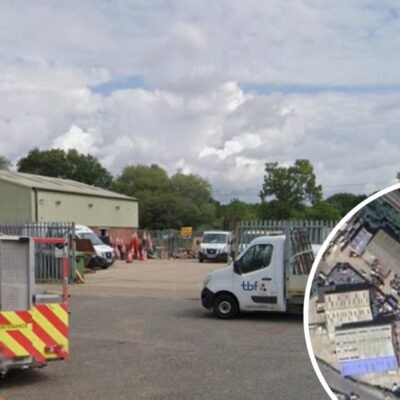The stadium and wider regeneration project could add an extra £7.3 billion each year to the UK economy, with the possibility of creating more than 17,000 homes and 92,000 jobs, the football club said.
Oxford Economics, commissioned by the club to investigate the economic feasibility of the project, previously said a new stadium could bring in an extra 1.8 million visitors to the city per year.
A report by the economic advisory firm last year said Trafford Wharfside, as well as the area containing Old Trafford and the site for a potential new ground, are “largely industrial,” with a considerable amount of car parking and derelict land.

Oxford Economics said a new stadium could “catapult Trafford from among the worst performing local authorities in the country to among its best performers”.
It said that the Stadium District and Trafford Wharfside Masterplan has the potential to deliver more than 17,000 more homes, which are expected to accommodate more than 42,000 additional residents.
The report also found there is an opportunity to support the delivery of both the stadium and regeneration of Trafford Wharfside by upgrading the railway line in Trafford.
Dr Tony Syme, a macroeconomic expert at the University of Salford’s Business School, said: “[The project] should mean enormous opportunities, it would be a much larger social, leisure, sporting centre around Trafford, so enormous possibilities in terms of employment and jobs.”
Dr Syme acknowledged there could be “major disruption” to nearby residents but believed the possibilities outweigh this.
A start date for the work has not been confirmed, but architect Norman Foster said once work is underway, the stadium could be built within five years.
Manchester United’s co-owner, billionaire Ineos chief Sir Jim Ratcliffe, previously estimated a new stadium would cost about £2 billion.
Dr Syme said the new stadium would be “much bigger” than the regeneration work delivered in East Manchester by the owners of Manchester City since 2008.
Tottenham Hotspur opened their new stadium in 2019, prompting a boost to the local economy.
An in-depth analysis of Spurs’ socio-economic impact from the 2021-22 season by professional services company EY found the club contributes about £900 million of gross output to London’s economy, generating an additional £478 million of growth value added (GVA) in London.
A total of £296 million of this GVA is specifically for the borough of Haringey.





